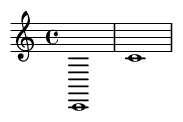Understanding Instrument Ranges and Clefs: A Comprehensive Guide
Introduction to Instrument Ranges and Clefs


Instrument ranges and clefs are fundamental concepts in music theory that help musicians understand the pitch boundaries of instruments and how to notate them. A range refers to the span of notes an instrument can produce, from its lowest to highest pitch. Clefs are symbols placed at the beginning of a staff to indicate the pitch of the notes.
Historical Context and Musical Significance
Clefs have evolved over centuries, with early notation systems using movable clefs to accommodate different vocal ranges. The modern system standardized the treble and bass clefs, with alto and tenor clefs used for specific instruments. Understanding ranges and clefs is crucial for composition, orchestration, and performance.
Types of Clefs
- Treble Clef (G Clef): Used for higher-pitched instruments like violin, flute, and trumpet.
- Bass Clef (F Clef): Used for lower-pitched instruments like cello, bassoon, and trombone.
- Alto Clef (C Clef): Used for viola and some vocal music.
- Tenor Clef (C Clef): Used for upper ranges of cello, bassoon, and trombone.
Instrument Ranges
Each instrument has a unique range, which can be divided into registers (low, middle, high). Here are some examples:
- Piano: A0 to C8 (88 keys)
- Violin: G3 to A7
- Cello: C2 to A5
- Flute: C4 to C7
- Trumpet: F#3 to D6
Technical Construction
Clefs are placed on the staff to assign specific pitches to the lines and spaces. For example, the treble clef circles the G4 line, while the bass clef dots surround the F3 line. Understanding these placements helps musicians read and write music accurately.
Practical Applications
Knowing instrument ranges and clefs is essential for:
- Composing and arranging music for different instruments.
- Transposing music to suit vocal or instrumental ranges.
- Understanding orchestration and ensemble balance.
Examples from Different Genres
In classical music, composers like Mozart and Beethoven meticulously notated their works using appropriate clefs. In jazz, musicians often transpose parts to fit the range of their instruments. Pop and rock musicians use clefs to write melodies and harmonies that fit vocal ranges.
Progressive Exercises
- Identify the clef and range of your instrument.
- Practice reading notes in different clefs.
- Transpose a simple melody to a different clef.
- Write a short piece for an instrument with a specific range.
Common Usage in Music
Clefs and ranges are used across all genres:
- Classical: Full orchestral scores use multiple clefs.
- Jazz: Lead sheets often use treble clef for melody and bass clef for chords.
- Rock/Pop: Guitar and vocal parts are typically notated in treble clef.
Conclusion
Mastering instrument ranges and clefs is a foundational skill for any musician. It enhances your ability to read, write, and perform music across various genres and ensembles. Practice regularly to build confidence and fluency in these essential concepts.
